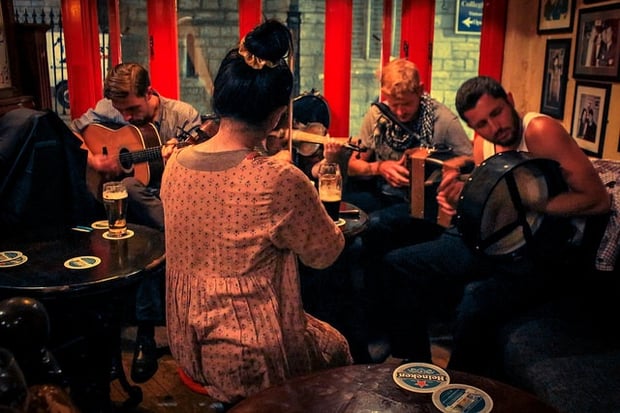 Photo by Damián Bakarcic via flickr.com; used under Creative Commons
Photo by Damián Bakarcic via flickr.com; used under Creative Commons
Having a tight song format is great, but most bands have a few points in the set when improvisation rules. If your lead guitarist is really burnin’ tonight, why not let him have a few extra bars to show off his chops? If your set isn’t as long as the time you have to fill, you might need a couple of open-ended numbers that can go on for a while.
Improvisation can become a big part of your live performance and make you a better act. Jazz musicians have based their shows on jamming for decades, and they have a series of hand signals that can make any improvised piece sound like a planned composition. These signals can work in any style of music.
- "Take it" (point at one player): Pointing at a player is a signal to take an improvised solo. The player can "shake off" the solo by shaking the head if no solo time is desired.
- "Head" (pat the top of your head): In jazz, the "head" is the main riff that begins the song. In any musical form, this denotes a return to the beginning.
- "Four and four" (raise four fingers on each hand): This is another jazz tradition in which each melodic instrument player alternates four-bar solos with the drummer. Usually the lead instrument goes first, followed by the drummer, then the next melodic instrument, then the drummer again. Your group can establish a convention about who goes first.
- "Run it" (point up with one finger and move your finger in a circle): This instructs the band to continue the current groove. Usually, it means that the band leader wants to improvise over the riff the band is playing.
- "Take it down" (hold palms flat toward the ground and move your hands downward): The band plays more quietly. This is a good time for soulful singing, spoken-word bits, or stories by your lead vocalist.
- "Last one" (hold up one fist): This indicates a final chorus or last time around. The song usually ends on the first beat of the next measure. Some bands also use a raised foot to denote the end, especially if the lead player needs to be playing with both hands.
- "Take it to the bridge" (touch your nose): It’s time to jump to the pre-determined bridge of the song.
- "Big hit" (raise your guitar neck, or your sticks if you’re a drummer): The song’s about to end. The final chord comes when you bring the neck or sticks down.
These are just a few common signs. Jazz bands also indicate key changes using hand signals, with fingers up or down indicating the number of sharps or flats. Some groups call out chords using the same signals, such as raising five fingers to denote the V chord. Your band can create any number of private signs. Veteran musicians from James Brown’s touring band say that Brown had his players learn hundreds of these signs, most of them describing the transitions between different songs and parts. With just a few signals to guide your band through changes, you’ll never play the same song twice, and your audience will never know what’s coming next.
Jesse Sterling Harrison is an author, recording artist, and part-time farmer. He lives in Massachusetts with his wife, three daughters, and a herd of ducks.







